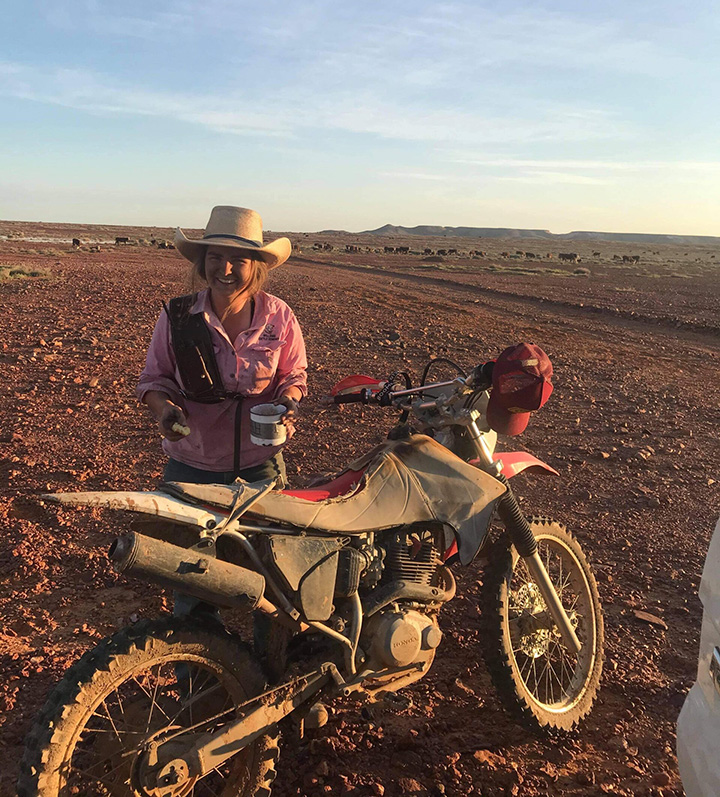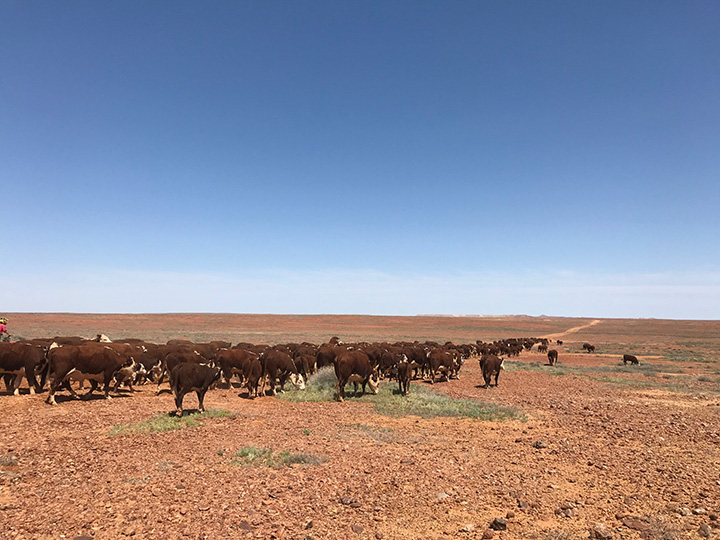A Canadian’s tale of working in the world’s largest cattle station
September 24, 2021
From food to language, workplace practices to climate, Sarah Kirby vividly shares how her Working Holiday experience led to her personal growth, professional development, and familial bond with Australians.
Childhood inspiration
After growing up on a family ranch located 27km from Pincher Creek in Alberta, Canada, Sarah decided she wanted to travel to Australia to learn more about ranch management.
She had always been passionate about the ranch and worked with her family there even from a young age.
“I started my own cattle herd when I was nine… Since I had some of my own animals, that meant I had my own chores… I would also tag along with my dad. He always said I was his sidekick,” she said.
After Sarah finished school, she thought about going overseas. She eventually decided to travel to Australia on the Visit OZ program with International Experience Canada’s (IEC) Recognised Organisation International Rural Exchange Canada (IRE).
“The program suited what I wanted to do. I also wanted to get away from the snow!”
In the end, Sarah said she chose Australia because of the difference “in the climate, rural land, agriculture, environment and just day to day life. I was especially interested in working on a cattle station and learning new ways of property management.”
Working in the world’s largest cattle station

IRE secured a position for Sarah at Anna Creek cattle station in South Australia. It is the largest cattle station in the world at 24,000 square kilometers in size, which is larger than some countries. It dwarfs even the largest cattle ranches in the USA and Canada, and is a perfect place to learn new skills in management and animal care, as well as water sources during a drought such as man-made dams and troughs.
Having come from a rural area in Canada, Sarah thought she was prepared for the remoteness of working in the outback in Australia. Even though Sarah had a lot of experience with farm work, she found it challenging, particularly as she was so far away from home for so long.
“There were challenges every day, I won’t sugar coat it, and the first few weeks took some adjusting. What I enjoyed most about Anna Creek was the friendship I made with both the owners and the crew. They made the bad days so much better. My biggest challenge was probably just accepting that I was across the world on my own and things will go wrong sometimes and there will be bad days. I used to get really upset and just want to go home so badly.”
Sarah also learned new skills like riding a motorbike. Given the size of the cattle station and the heat of the Outback, many cattle stations make use of motorbikes instead of horses when droving or mustering cattle.
Week in life

Sarah describes waking up early to have breakfast at 6:00am in the morning, with all workers expected to meet in the shed at 6:30am when the boss would tell staff what was happening for the day. For the most part, because of how large the station was, they would have to camp out away from the homestead, leaving on the Monday and coming back on the Friday, with Saturday spent working on general maintenance before going out to camp again.
“If we had a full crew with us for mustering and yard work, we would take the “camp truck” out which was a container with a kitchen, dining table, storage room and one bedroom. We would usually be out for five days at a time and our station cook would prepare us homemade meals before we left to put in the freezer. The station supplied us swags (portable sleeping tent/bag) and we would sleep in them outside the camp. Once I did my first week out at camp, I got used to it and I loved it because it made life simple. We had no phone reception so all we had to focus on was each other and work. For about two months, we were out at camp building new cattle yards.”
R&R
It was not all about work, though. “Our days off were Sundays so we would go out to William Creek with friends on Saturday night after work (when COVID-19 rules were not in place) then usually sleep all day Sunday! Normally I would go to the town of Coober Pedy every few weeks on Sunday to get essential items and pizza of course! Unfortunately, all events this year were canceled due to COVID-19; however, I did have the chance to go to a cricket match in February not long after I arrived.”
Life lessons
The Working Holiday Program Sarah did will stay with her forever. She learned new skills and knowledge that she can take back home, as well as a new outlook on work, “I absolutely love the Aussies I’ve met, they are incredibly welcoming and funny. I am so grateful to have met so many different people. The biggest thing I will take back home is my work ethic. I learned that you could improve as long as you give something an honest go and work hard towards it. I will never forget learning this lesson and I will always be grateful for it.”
What has your Working Holiday inspired you to do? To share your story email whpcanada.sydney@international.gc.ca.
International Experience Canada (IEC) began in the 1950s as a cultural exchange initiative. Today, IEC supports Canada’s interests by administering Youth Mobility Arrangements (including Working Holiday) with 30+ countries and territories. The agreement between Canada and Australia started in 1975 and is currently reciprocal in the number of inbound and outbound participants.
- Date modified: